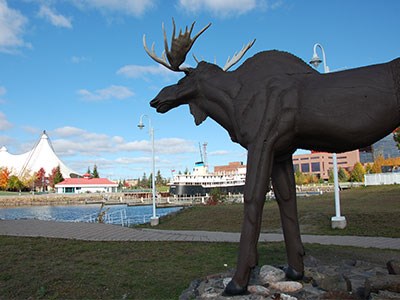Decreasing populations in the North are nothing new, and Northern communities have struggled for years to retain their populations and cut down outmigration. Now the Sault Ste. Marie Local Immigration Partnership (LIP) is taking the lead in finding a made-in-the-North immigrant solution to actively draw more people to settle in Northern Ontario.
One of a handful of LIPs in Northern Ontario — the others are based in North Bay, Sudbury, Thunder Bay and Timmins — the Sault Ste. Marie LIP offers welcoming services for immigrants who are new to the area with everything from getting their driver’s licences to starting a new business.
It’s now planning a fall summit that would bring together the five LIPs from Northern Ontario to discuss strategies and create an action plan for attracting more people to the North.
“Finally, some ears are listening down south that are saying, ‘Yes, our issues and concerns in Northern Ontario are a little different than they are in southern Ontario — in a big way,’” said Danny Krmpotich, coordinator for the Sault LIP. “Fortunately for us, we’ve got some folks that have been listening.”
The Sault LIP has been taking the lead on immigration in the North. Over the last year, the organization has branched out to include the Sault’s bedroom areas to ensure no newcomer is overlooked. Many newcomers work in the Sault but choose to live outside the city, Krmpotich noted, and so they need services, too.
Like other Northern communities, the Sault region is experiencing a shortage in areas such as medicine, IT, engineering and skilled trades. The LIP’s service area now stretches from Prince Township all the way to Thessalon. The more the LIP can make newcomers feel welcome, the more likely they are to stay, he noted.
“We had seen that population numbers were beginning to drop, so why not get on board with the LIP becoming a regionally welcoming community, and we’ll see if we can draw the necessary people that we need up here,” he said.
Part of that strategy involved becoming a signatory city within the Canadian Coalition of Municipalities Against Racism and Discrimination (CCMARD), Krmpotich said. As a followup, the LIP is now working on an action plan to combat racism and discrimination in the city and surrounding areas.
But Krmpotich said the Sault has embraced newcomers, noting that the last reported racially motivated incident was well over two years ago. The LIP responded with an education program to promote tolerance and acceptance, and it seems to be working.
Krmpotich said the city has come a long way since he joined the LIP in 2009, when there were no newcomer services to speak of in a city of nearly 77,000.
“Now, direct and indirect services, there are well over 100 programs and services geared toward our immigrant population,” he said.
It helps, too, that the city’s educational institutions, Sault College and Algoma University, are experiencing record enrollments from international students who hail from Saudi Arabia, Egypt, Mexico, Korea and China. It’s been a concerted effort on the parts of the schools to not only become more welcoming, but also more invitational to international students, Krmpotich said.
He sees this as a prime opportunity to retain students beyond their study years and encourage them to settle in Sault Ste. Marie.
“That could be our future, and we’re looking at everything from high IT folks to electrical and mechanical engineers,” he said. “Why lose them when you already have them in the city? So I know that we’re going to develop a plan of focus towards that end.”
The community has received support from various levels of government: municipal mayors and reeves, MP Bryan Hayes, MPP David Orazietti, and Citizenship and Immigration Canada (CIC) have all thrown their support behind the idea of an immigrant strategy for Northern Ontario. Last year, Jason Kenney, the former federal minister for citizenship and immigration, was featured as the keynote speaker during the Sault LIP’s annual immigration forum.
Now that the support is there, Krmpotich believes the work is in the hands of the five Northern Ontario LIPs to take it to the next level.
“If the five band together, along with the respective bedroom communities, with their mayors and councils, really, there’s nothing that can stop us,” he said. “We believe that wholeheartedly.”




